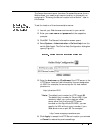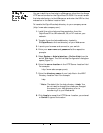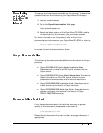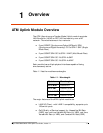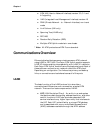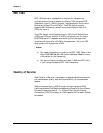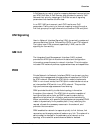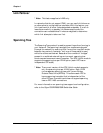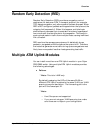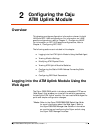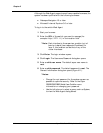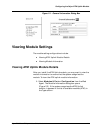
Cajun P550/P880 Switch ATM Uplink User Guide, Version 1.1
Overview
1-5
A QoS domain is a set of rules for mapping between frame priorities
and ATM QoS Sets. A QoS Domain also consists of a series of QoS
Sets and their priority mappings. A QoS Set is a set of signaling
parameters that describe a traffic class.
In an RFC 1483 environment, each PVC has its own QoS
parameters. Traffic priority to channel mapping is done through a
link that groups up to eight channels to a common ATM end point.
UNI Signaling
User-to-Network Interface Signaling (UNI) dynamically creates and
removes Switched Virtual Connections (SVCs) in an ATM network.
The higher layer ATM protocols, specifically LANE, use the UNI
signaling for connectivity.
ILMI 4.0
The Integrated Local Management Interface (ILMI) protocol
provides the ATM Uplink module with status and configuration
information across the user-to-network interface. This information
includes ATM network prefixes, registered services, and capabilities.
PNNI
Private Network-to-Network Interface (PNNI) is a dynamic routing
protocol that manages and allocates network resources for SVCs in
an ATM network. Because the ATM Uplink module implements
PNNI in non-transit mode, the ATM Uplink module does not act as
an intermediate ATM switch in an ATM network. This provides
high-performance edge access and load-sharing.
PNNI provides the ability to distribute topology information
throughout the network. The ATM Uplink module is capable of
having multiple active links, so PNNI is used to make routing
selections to optimize link utilization and provide load sharing.
When a connection with specific QoS parameters is requested, PNNI
is able to dynamically find a possible path (if any) satisfying the
request, allocate the necessary resources in the network, and
provision the connection.
PNNI enables the network to respond quickly to link failures, link
recoveries, and changing network loads on any link. The network is
able to adapt to changes in the addressing of a network or the
topology of the network as switches are added or deleted.



